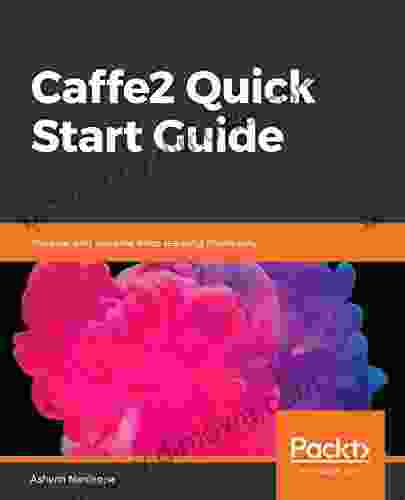Proteinuria: Basic Mechanisms, Pathophysiology, and Clinical Relevance

Proteinuria, the presence of excess protein in the urine, is a common finding in clinical practice. It can be a sign of various underlying health conditions, ranging from benign to life-threatening. Understanding the basic mechanisms, pathophysiology, and clinical relevance of proteinuria is essential for healthcare professionals to accurately diagnose and manage patients with this condition.
Basic Mechanisms
Normally, the glomerular filtration barrier prevents the passage of proteins into the urine. This barrier consists of three layers: the glomerular endothelium, the glomerular basement membrane, and the podocytes. Proteins are prevented from passing through this barrier by a combination of size-selective filtration and electrostatic repulsion.
5 out of 5
| Language | : | English |
| File size | : | 2082 KB |
| Text-to-Speech | : | Enabled |
| Screen Reader | : | Supported |
| Enhanced typesetting | : | Enabled |
| Print length | : | 248 pages |
Proteinuria occurs when the glomerular filtration barrier is damaged, allowing proteins to leak into the urine. This damage can be caused by a variety of factors, including:
- Increased glomerular permeability
- Reduced glomerular charge
- Podocyte injury
Pathophysiology
The pathophysiology of proteinuria is complex and depends on the underlying cause. However, there are some general mechanisms that contribute to the development of proteinuria:
- Increased glomerular permeability: This can be caused by a variety of factors, including inflammation, toxins, and ischemia. Increased glomerular permeability allows proteins to leak into the urine.
- Reduced glomerular charge: The glomerular basement membrane is normally negatively charged, which repels proteins. A reduction in glomerular charge can allow proteins to pass through the filtration barrier.
- Podocyte injury: Podocytes are cells that wrap around the glomerular capillaries. They play an important role in maintaining the integrity of the glomerular filtration barrier. Podocyte injury can damage the filtration barrier and allow proteins to leak into the urine.
Clinical Relevance
Proteinuria is a common finding in clinical practice. It can be a sign of a variety of underlying health conditions, including:
- Glomerulonephritis
- Diabetic nephropathy
- Lupus nephritis
- Amyloidosis
- Multiple myeloma
The presence of proteinuria can have a number of clinical consequences, including:
- Edema: Proteinuria can lead to edema (swelling) due to the loss of protein from the blood.
- Hyperlipidemia: Proteinuria can also lead to hyperlipidemia (high cholesterol) due to the loss of lipoproteins from the blood.
- Increased risk of cardiovascular disease: Proteinuria is a risk factor for cardiovascular disease, including heart attack and stroke.
- End-stage renal disease: Proteinuria can lead to end-stage renal disease (ESRD) if the underlying cause is not treated.
Management
The management of proteinuria depends on the underlying cause. In some cases, proteinuria can be managed with lifestyle changes, such as diet and exercise. In other cases, medication may be necessary to reduce proteinuria.
- Lifestyle changes: Diet and exercise can help to reduce proteinuria in some cases. A low-protein diet can help to reduce the amount of protein that is filtered by the glomeruli. Exercise can help to improve overall health and reduce the risk of cardiovascular disease.
- Medication: Medications that can be used to reduce proteinuria include angiotensin-converting enzyme (ACE) inhibitors, angiotensin receptor blockers (ARBs),and diuretics. These medications can help to reduce glomerular permeability and lower blood pressure, which can help to reduce proteinuria.
Proteinuria is a common finding in clinical practice. It can be a sign of a variety of underlying health conditions,
5 out of 5
| Language | : | English |
| File size | : | 2082 KB |
| Text-to-Speech | : | Enabled |
| Screen Reader | : | Supported |
| Enhanced typesetting | : | Enabled |
| Print length | : | 248 pages |
Do you want to contribute by writing guest posts on this blog?
Please contact us and send us a resume of previous articles that you have written.
 Book
Book Novel
Novel Page
Page Chapter
Chapter Text
Text Story
Story Genre
Genre Reader
Reader Library
Library Paperback
Paperback E-book
E-book Magazine
Magazine Newspaper
Newspaper Paragraph
Paragraph Sentence
Sentence Bookmark
Bookmark Shelf
Shelf Glossary
Glossary Bibliography
Bibliography Foreword
Foreword Preface
Preface Synopsis
Synopsis Annotation
Annotation Footnote
Footnote Manuscript
Manuscript Scroll
Scroll Codex
Codex Tome
Tome Bestseller
Bestseller Classics
Classics Library card
Library card Narrative
Narrative Biography
Biography Autobiography
Autobiography Memoir
Memoir Reference
Reference Encyclopedia
Encyclopedia Traci Ison Schafer
Traci Ison Schafer Alison Appelbe
Alison Appelbe Mark Grabowski
Mark Grabowski Scott Mercer
Scott Mercer Mike Dellosso
Mike Dellosso Susan Valentine
Susan Valentine Robyn Gioia
Robyn Gioia Eric Gutstein
Eric Gutstein Plutarch
Plutarch Edgar Lansbury
Edgar Lansbury Bethany Bradsher
Bethany Bradsher Marcos Viana
Marcos Viana Jeff Schabel
Jeff Schabel Amanda Newton
Amanda Newton E M Finn
E M Finn Flavius Josephus
Flavius Josephus Christy Peterson
Christy Peterson Sarah Robbins
Sarah Robbins Amie Jane Leavitt
Amie Jane Leavitt Allen Zadoff
Allen Zadoff
Light bulbAdvertise smarter! Our strategic ad space ensures maximum exposure. Reserve your spot today!
 Rudyard KiplingFollow ·19.4k
Rudyard KiplingFollow ·19.4k Wayne CarterFollow ·4k
Wayne CarterFollow ·4k Henry GreenFollow ·11.4k
Henry GreenFollow ·11.4k Michael SimmonsFollow ·17.5k
Michael SimmonsFollow ·17.5k Norman ButlerFollow ·6k
Norman ButlerFollow ·6k Colin RichardsonFollow ·11.9k
Colin RichardsonFollow ·11.9k Adrien BlairFollow ·12.4k
Adrien BlairFollow ·12.4k William PowellFollow ·13.2k
William PowellFollow ·13.2k

 Darnell Mitchell
Darnell MitchellMathematician's Odyssey to Uncover the Origins of Numbers
In his captivating new...

 Milton Bell
Milton BellUnlock the Power of Profiting Without Property: Your...
Are you ready to embark on a...

 Arthur Mason
Arthur MasonUnlock the Minds of Mathematical Giants: The Lives of the...
Mathematics, the language of...

 Fernando Pessoa
Fernando PessoaUnlock the Magic of the Big Apple: New York City for...
Unleash the Adventures in New...

 H.G. Wells
H.G. WellsAddiction Counselor Exam Secrets Study Guide: Your...
Embark on a...
5 out of 5
| Language | : | English |
| File size | : | 2082 KB |
| Text-to-Speech | : | Enabled |
| Screen Reader | : | Supported |
| Enhanced typesetting | : | Enabled |
| Print length | : | 248 pages |














